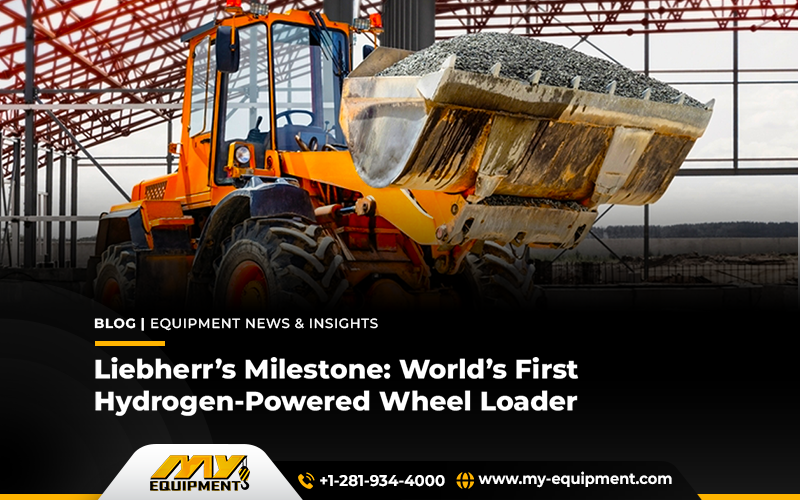The urge to go zero-emission equipment industry is getting popularity with each passing day. No wonder that in just a few years, the equipment industry will undergo a complete transformation from what it is today. Going zero-emission industry first required to limit down the use of diesel and going electrified. The rapid launches of electric equipment have taken over all challenges for the OEMs.
Following the rapid pace, Liebherr has put its first-ever hydrogen-powered wheel loader in the equipment market. This launch has given the company a major breakthrough yet in its prototype stage. The company’s facility in Bischofshofen, Austria hosted a special occasion when the L 566 H, an innovative prototype, was unveiled.
Explaining the tech used in the prototype
After spending a lot of time and capital in research and development, Liebherr was able to develop this masterpiece, operated completely on hydrogen fuel. The process was not a cup of tea for the team as the large heavy equipment weighs anywhere between 40-50 tons. In this weigh, the engine operated from the alternative fuel might not let them achieve the goal. However, the dedication of the team made it through the challenge and proved to be the shark in the tank.
Primarily, Liebherr’s engine plant in Bulle, Switzerland made this hydrogen engine to be fixed in the used wheel loader for sale for experiments. These engines are designed to produce very little nitrogen oxide and no greenhouse gas emissions. Whereas, these engines’ mechanical and thermal interfaces are similar to those of conventional diesel engines. Hence, it is simpler to integrate them into the frameworks of already-existing machinery.
First hydrogen filling station in Salzburg
After developing the prototype, the challenge was not even over. The availability of the hydrogen fueling station was another hassle standing in the way of achieving zero-emission equipment. Liebherr took over it though by simply constructing the first-ever hydrogen fueling station in the state of Salzburg in addition to introducing the L 566 H. An important first step toward encouraging the wider use of hydrogen-powered equipment is this station.
Liebherr Bischofshofen’s Chief Technical Officer, Herbert Pfab, underlined the significance of easily available hydrogen infrastructure for promoting decarbonization initiatives in the building industry.
“We need access to hydrogen to advance our research on hydrogen. To achieve our objectives of decarbonizing construction machines, we constructed this filling station.”
The extensive use of hydrogen engine
The major concern that came from the industry leader was whether this engine would equally be efficient in other heavy-duty equipment. Liebherr already knew the concern and presented the other prototype running from the same engine in the same event. It was made clear by the Liebherr team that the engine can easily power the other heavy-duty equipment making them the sustainable option for the construction job sites. This extensive use of the hydrogen engine may entirely transform the construction equipment industry in a few years.
Liebherr’s position in the market
The launch of the L 566 H prototype by Liebherr represents a major advancement in the creation of eco-friendly construction machinery. Liebherr is laying the groundwork for a time when large-scale gear can run effectively without adding to greenhouse gas emissions by utilizing hydrogen technology. This innovation demonstrates Liebherr’s position as a pioneer in construction machinery innovation and is in line with the global movement towards more sustainable industrial practices.
The construction industry is always looking for ways to cut down on its carbon impact, and the L 566 H and its hydrogen infrastructure set a new benchmark for environmentally friendly heavy machinery. Due to the success of this prototype and the infrastructure in Salzburg that supports it, the industry will probably get closer to its decarbonization objectives as a result of additional developments and acceptance of hydrogen technology.


 1400 Broadfield Blvd, Houston, TX 77084,
USA.
1400 Broadfield Blvd, Houston, TX 77084,
USA.